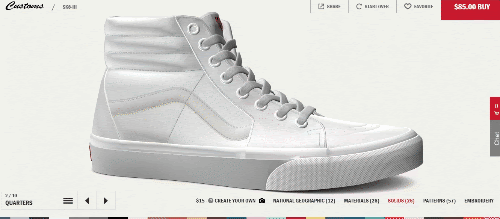The short answer is yes. Absolutely.
When we say unbranded, we treat this as inclusive of two categories. It can mean content that has literally nothing to do with your brand and doesn’t sit on a branded channel. Or, it can mean content that doesn’t feature your brand heavily, and isn’t about your brand, but might sit on your own channels. Let’s call the latter type ‘minimal branding’.
The benefits
There are some big benefits to doing unbranded or minimal-branded content, which can be split into; new audiences from new verticals or higher engagement from existing audiences.
In the content team at Croud, we like to separate our audiences into three categories:
- New audiences
- Brand aware
- Brand advocates

All audiences start as new audiences (unless you’re a super brand, such as McDonald’s or Nike) and move down the funnel – displayed above. There are multiple entry points, but unbranded content can cover all three.
Three things unbranded content can do for your business
1. Increase engagement
If the content seems organic, and not overtly associated with a brand, it can increase engagement. In fact, some brands use a microsite to host related content or interactive quizzes (like Adobe Creative Personality test), even BMW, feature editorial blogs on their homepage.
Whilst Adobe’s Creativity Personality test has been taken by over three million people, there’s no push for sales here. It’s all about creating something fun and engaging that will connect with as many people as possible. For example, Adobe’s Creative Types test went viral.

2. Increase returning visitors
Some products and services are something people don’t buy on a regular basis. So, with regular content, you can increase regular users to your site. Return visitors will then build brand loyalty.
For example, cars, or washing machines, or even kettles are all products people won’t necessarily buy often. But if you offer travel guides, tips on removing turmeric stains, recipes or anything else relevant, you’re giving your audience a reason to keep engaged with your site, or your social media.
You don’t need any branding for travel guides or recipes, they simply benefit your audience. Giving your audience something of value will ultimately increase their perception of your brand. For example, BMW’s international website features plenty of stories that don’t feature the brand.

3. Tap into a completely new audience
Think about some area that is related to your product or service. In fact, think about ALL the areas related to your product or service. Yes, a car can take you from A to B, but it’s also a place for the family to get together, it facilitates holidays, it’s a place to consume podcasts, it might even take you on a trip to KFC at 3 am. So it’s important to think outside of the box too.
There are some excellent audience insight platforms out there which we work with at Croud, such as Global Web Index. We’ve also had success scraping specialist forums, analysing ‘People also ask’ data with relative keywords and using social listening.
Also, unbranded content often goes viral – whereas branded content does not. If you’re looking to maximise returns and attract new audiences, unbranded content can often work. Especially as viral content often undergoes a discovery phase, where new audiences will dig into who created a piece to find out what brands and people are featured.
Where do we usually see this type of content?
Unbranded content can work especially well for newsletters. Figure out what else your demographic is interested in, and produce content about that. BMW does this well by talking about interior design, luxury hotels and even handmade shoes. The latter of which is specifically about walking to places instead of driving. Big news, BMW has acknowledged that people don’t always drive their BMWs. Groundbreaking.
It may sound trivial, but these wider ideas can sometimes get scrapped. Too often have I heard from clients “but how does this relate to our product?”, when the question should be “does this relate to our audience?”.
The key here is that this type of content shows that a brand understands that its audience is human with a variety of interests, cares and concerns that come with that. It shows that you’re not trying to convert them into a relentless buying machine.
So, what next?
The next step is to offer up something that’s seamlessly branded so it appears natural to your audience. This can be through related content, view next or anything along these lines. By doing this, you can ensure your audience is enjoying your content and building respect for your brand, and in return will be more willing to engage with your product.
Furthering this, rather than pushing your audience directly to a product page, we’d suggest including something like a product configurator or a buying guide/advice piece. This way an audience – that has entered your website via an unbranded piece of content – can feel like they’re discovering a brand rather than feeling like they’re being sold to.

It’s not all about numbers
Unbranded content can be great for producing backlinks – often the less branding the better for outreach and link placements – and even for drawing people in via SERPs. However, that’s really not the whole story. Ultimately, marketing this way is not going to give you the quick hits that paid social or programmatic will.
Producing lots of content around your brand, rather than about, is a long term strategy. You’ll achieve great things, such as:
- Build authority in new verticals
- Build your engagement and trust
- Build a loyal following
It’s about brand perception. Without a considered and broad content approach, you risk becoming a very transactional business. We all want transactions, but increasingly brands with personality are winning over customers in the long term. And how do these brands express this personality? Quite often, through unbranded or minimally branded content.
To find out more about building a robust content marketing strategy or about Croud, get in touch.



